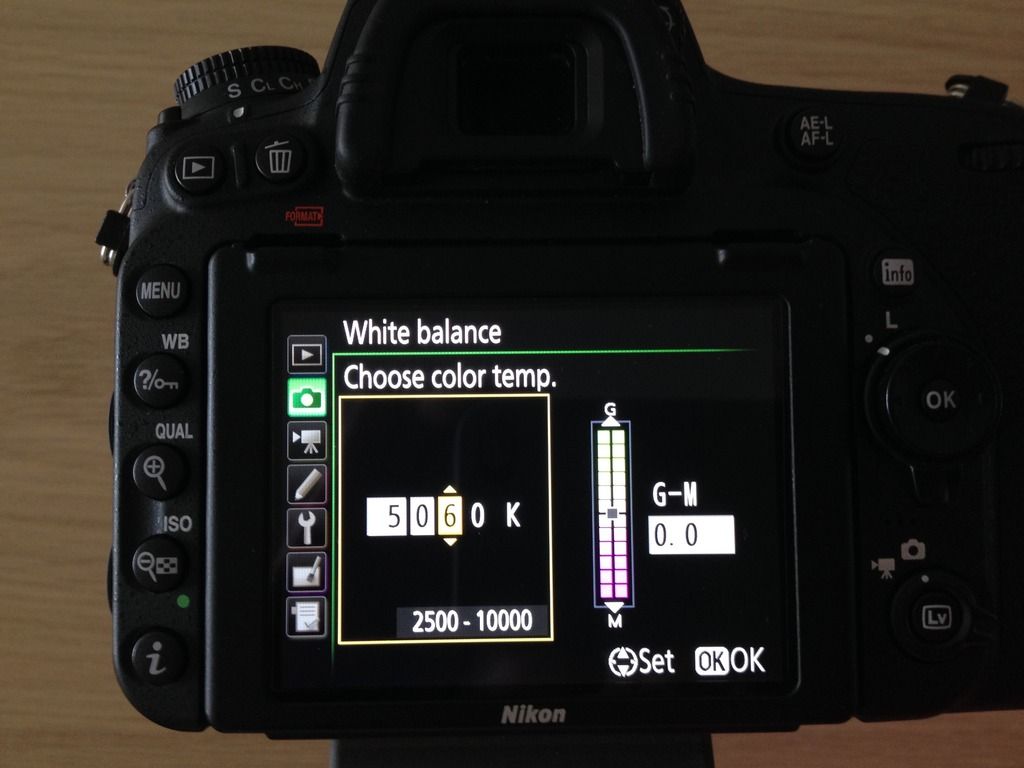Unless I am much mistaken it doesn't offer adjustment on just one axis.
If you look at
this image you will see what I know as the common menu allowing for variation on the "preset" white balances, shady, sunlight, tungsten etc.
Not having handled a D750 I can't say exactly what the menu looks like but according to the illustration
on page 177 of the manual it is very similar to other
Nikon models.
The image that One Click has posted ( post #1 ) is of the adjustment in the menu where one alters the white balance directly by the Kelvin setting and as you would be only too well aware, altering the numbers shifts the amber / blue axis and raising or lowering the sliding scale to the right of the numbers alters the green / magenta axis.
[/








 Thanks useful information:
Thanks useful information: 


 Reply With Quote
Reply With Quote Add To Bookmarks
Add To Bookmarks
























 .
. Threadstarter
Threadstarter








